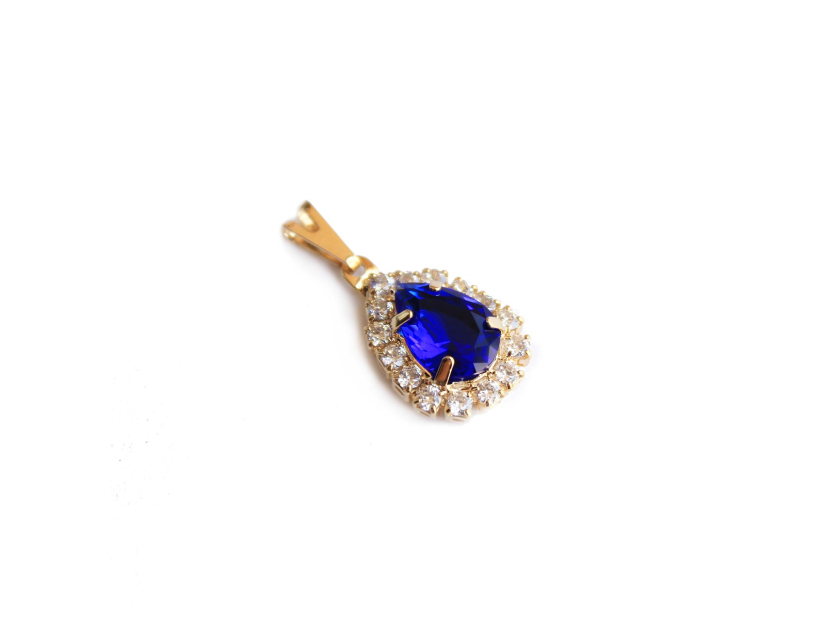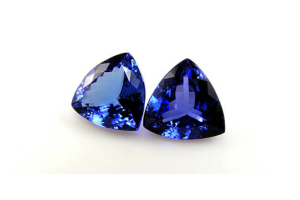USD
/
USD
/
Shipping to:
Currency:
Topaz is a captivating gemstone celebrated for its remarkable range of colors, each offering unique charm and appeal.
From serene blues to fiery reds, topaz’s spectrum is both diverse and enchanting.
In this article, we’ll explore the various shades of topaz, the differences between natural and treated stones, and how to choose and care for your topaz jewelry.
The Diverse Palette of Topaz Colors
Topaz naturally occurs in a variety of colors, and treatments can further enhance or alter these hues.
Let’s explore the most notable shades:
Blue Topaz: A Popular Favorite
Blue topaz has become incredibly popular, commonly featured in rings, necklaces, and earrings.
While natural blue topaz is rare and usually pale, most blue topaz on the market has been irradiated and heat-treated to create bold, lasting color.
Top shades include:
- Sky Blue: A light, airy blue reminiscent of a clear sky.
- Swiss Blue: A vivid, electric blue with high saturation.
- London Blue: A deep, intense blue with inky undertones.
If you’re into vibrant hues, check out gemstone engagement rings for colorful, eye-catching styles.
Imperial Topaz: The Regal Rarity
Imperial topaz is prized for its luxurious golden to reddish-orange tones.
Primarily found in Brazil, it’s one of the rarest and most valuable topaz types.
If you’re drawn to bold, sophisticated gems, explore non-traditional engagement rings for stand-out pieces featuring unique stones like this.
Pink and Red Topaz: Romantic and Rare
Pink and red topaz are naturally rare, with their shades often linked to trace amounts of chromium.
These romantic hues are sometimes enhanced through heat treatment to achieve deeper saturation.
Looking for something sweet and sentimental? Browse gemstone rings for gifts that make perfect tokens of love.
Colorless (White) Topaz: A Brilliant Classic
Colorless topaz offers excellent brilliance and is often used as a diamond substitute.
It also serves as the base for many treated varieties, like blue and mystic topaz.
Not sure how topaz compares to other options? Check out this guide on lab-grown diamonds vs gemstones.
Yellow and Orange Topaz: Warm and Sunny
Natural yellow and orange topaz—sometimes called “precious topaz”—features cheerful golden tones.
Historically, these hues were often confused with citrine or smoky quartz.
For something with a golden glow, check out gemstone engagement rings with vibrant warm colors.
Green Topaz: A Gentle Gem
Green topaz is among the rarest naturally occurring colors and typically has a pale, minty tone.
It's sometimes mistaken for peridot or other green stones and is occasionally created through treatment.
Want to learn how gemstones like topaz are formed? Explore this guide on how gemstones and diamonds are formed.
Mystic Topaz: A Modern Marvel
Mystic topaz starts as colorless topaz and gains its magical rainbow-like sheen through a special coating process.
This iridescent finish creates a stunning, futuristic look—but requires gentle handling to preserve its surface.
Searching for something bold and unique? Take a look at gemstone gift rings for mesmerizing options.
Natural vs Treated Topaz: What’s the Difference?
While topaz occurs naturally in various colors, many stones undergo treatment to enhance their appearance.
Common treatments include irradiation and heat, especially for creating vibrant blue or pink hues.
These processes are safe and permanent, but it’s always best to buy from a reputable source that discloses any enhancements.
How to Choose the Right Topaz Color
Picking the right color comes down to your style, occasion, and the message you want your jewelry to send.
- Personal Style: Go with the color that speaks to you and fits your look.
- Occasion: Soft pastels work well for everyday wear, while rich hues can mark special events.
- Symbolism: Each color has its own meaning—blue for calm, pink for love, gold for success, and so on.
Want something meaningful and expressive? Browse the collection of non-traditional engagement rings.
Caring for Your Topaz Jewelry
Topaz ranks 8 on the Mohs scale, which means it’s durable but not indestructible.
It can chip if struck, so take a little extra care, especially with everyday wear.
- Cleaning: Use mild soap and warm water with a soft cloth. Skip ultrasonic cleaners, especially for coated stones like mystic topaz.
- Storage: Keep your topaz separate from harder stones like diamonds to avoid scratches.
- Handling: Avoid rough wear or chemical exposure—remove topaz jewelry during chores or workouts.
Looking to build a matching set? Pair your topaz with diamond wedding bands for a complete look.
Frequently Asked Questions
Is blue topaz naturally occurring?
Natural blue topaz does exist but is usually light in color. Most vivid blue stones are treated for enhancement.
What is the most valuable topaz color?
Imperial topaz, with its golden to reddish-orange hue, is considered the rarest and most valuable.
Can topaz change color over time?
Properly treated topaz is color stable. However, coated varieties like mystic topaz can fade or scratch if not stored or cleaned properly.
Is mystic topaz natural?
No. It’s created by coating colorless topaz with a thin film that creates a rainbow effect.
Which color topaz is best for everyday wear?
Blue and colorless topaz are great for everyday wear due to their durability and versatility. Just ensure they’re well set and maintained.








